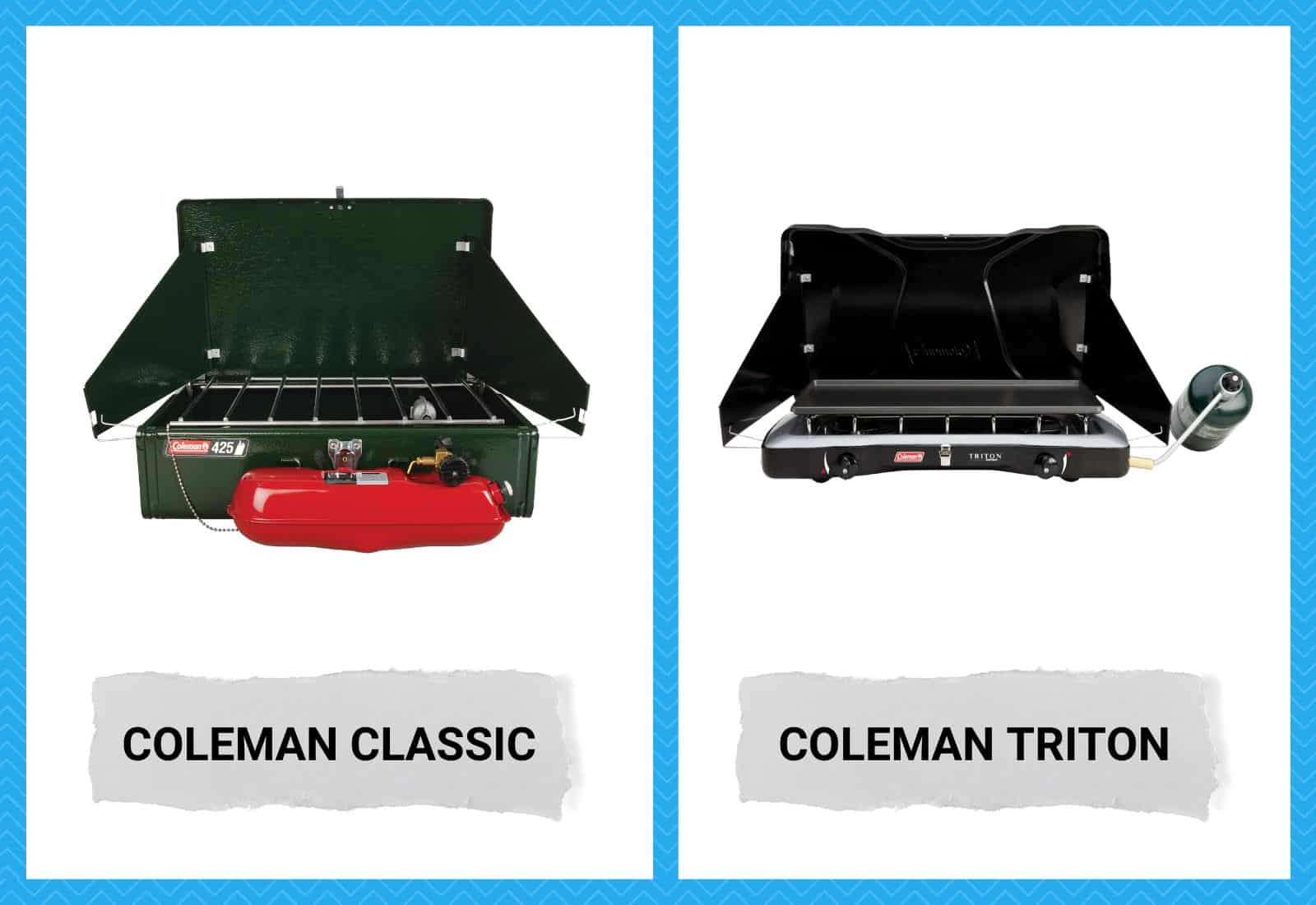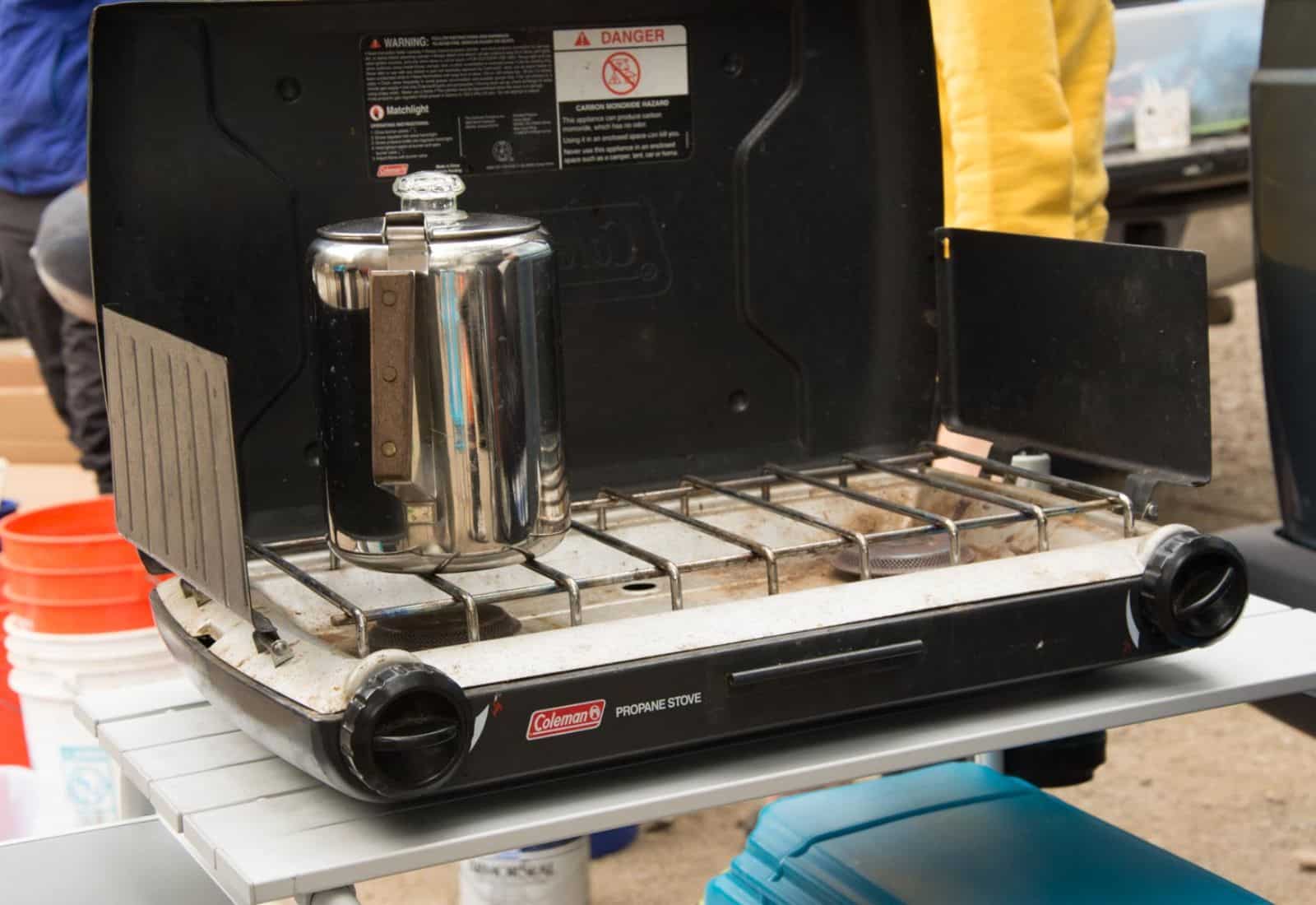
Camping is an outdoor activity, so it won’t make sense if you do all the cooking inside your recreational vehicle.
It’s true that you invested in an RV to make life easier at the campsite, but don’t you think doing all your chores inside your motorhome defeats the purpose of camping? A little picnic or barbecue just outside your camper every once in a while is fun and exciting. The kids will love that.
But, of course, you can’t bring your range outside the RV. That’s heavy and probably built into the cabinet. It might not even fit through the door. Cooking with firewood isn’t safe and practical either unless you want to do it for the experience.
In other words, you need a separate stove just for this occasional activity, more so if you make it a regular thing. Just see that you have enough fuel, as it’s hard to find fuel in the boonies. To avoid running out of supplies, consider staying at a designated campground with supply stores.
How to choose a portable camping stove
Portable stoves are standard camping equipment. You can buy them at any outdoor recreation shop throughout the country. They are even available on Amazon.
Be careful when selecting a store to ensure you get the correct model. Some of these stoves may be too small or too big for your cooking needs. Here are several factors to consider when choosing a portable camping stove:
- Style – Portable stoves are available in freestanding and tabletop. A freestanding stove has legs that allow it to stand on its own. A tabletop stove doesn’t have legs and must be placed on a flat and level surface, like a table. The only difference between these two is a freestanding stove doesn’t require additional base support.
- Number of burners – How many burners do you think you need to cook enough food for everyone? A two-burner stove is a common choice for families. But if you are a big group, you will need more burners. You can use one burner for one-pot dishes and the other for grilling.
- BTU – British thermal unit is the measure of heat necessary to raise the temperature of one pound of water by one degree Fahrenheit. This also represents the heat capacity of the stove. The higher the BTU, the stronger the flames you can expect the burners to produce.
- Size – You should also consider how big the stove is. By how big, I mean its length and width. You want your stove to have enough space for pots and griddles. It’s hard to cook if the stovetop is cramped. However, also consider storage. Make sure the stove can fit whatever space you have for it in your RV.
- Fuel Type – Most camping stoves use propane. This fuel is ideal for portable stoves because you can carry the canister wherever you go. In contrast, an electric stove consumes too much electricity, which you don’t have the luxury of when camping.
- Material – What metal are the burner, casing, and grate made of? We all know metal conducts heat fast; some metals smolder or melt below 500 degrees. You don’t want those metals. Luckily, commercial stoves go through strict quality assurance and certification before being introduced into the market. That’s why it’s crucial to choose a reputable brand.
This article will cover two portable stovetop models from Coleman, an America-based recreation product manufacturer known for its camping tools and gear. Among its products are coolers, sleeping bags, camping shelters, lanterns, and of course, portable stoves.
But we’ll focus on its Classic and Triton stoves. Then, we’ll compare their specs and qualities to help you determine which one to purchase for your next camping trip.
| Feature | Coleman Classic | Coleman Triton |
|---|---|---|
| Dimension | 4.1” x 21.9” x 13.7" | 5.7” x 22.6” x 13.7” |
| Weight | 5.26 kg. | 2.2 kg. |
| Main Material | Aluminum and Steel | Steel Alloy |
| Fuel | Propane | Propane |
| Total BTU | 20,000 | 22,000 |
Coleman Classic vs Coleman Triton
Weight
This is probably not a big deal but still worth noting since a product’s weight may reveal valuable information. For instance, you can get a clue on what metal the burner or wind-block panels are made of by the stove’s overall weight.
It may also give you an idea of how big it is compared to other products you are considering.
But this isn’t always the case. Some stoves are heavier than other stoves that are bigger than them. The best example is the Coleman Classic. It’s heavier but smaller than the Coleman Triton.

The best explanation for this is the metal the stove is made of—aluminum and steel—is most likely from a heavy range. Steel, alone, already bears some weight. You may notice that Coleman Triton is also made of steel, but some types of steel lose weight when alloyed with a lighter metal.
More than anything, you should choose a lighter stove because it’s easier to take out, carry around, and store. Being about 1 kg lighter than Coleman Classic, the Coleman Triton is a better choice in terms of weight.
Like RV manufacturers, portable camping stove manufacturers also think of ways to make their products lighter and more convenient to use.
Size
An extra inch or two may seem small, but when it comes to portable stoves, it makes a huge difference. Imagine using a pot that has a 4-inch radius.
If the stove you purchased is at least 1 inch longer than the initial product you were eyeing, you can use a pot with a 5-inch radius or about 28 sq. in. wider. That will let you cook at least one more bowl of stew.
The Coleman Triton is slightly larger than the Coleman Classic based on the table. However, it appears that Coleman claims both can fit the same size of pans.
Regardless, you should try it to satisfy your curiosity, and probably do your own review to educate other camping enthusiasts.
Burn Time and BTU
We briefly discussed BTU above, but this property ultimately indicates the speed at which the stove can cook food.
The higher the BTU, the faster you can prepare meals. Also, it is directly linked with the fuel’s burn time, considering that the stove requires more fuel to generate more BTU.
Since Coleman Triton’s two burners generate up to 22,000 BTU, you may think it also burns fuel faster than Coleman classic. But this isn’t the case.
Both propane cylinders can last up to one hour without a break. Both also have a PerfectFlow pressure regulator, which keeps the heat consistent. That alone gives you an idea of which one brings more heat.
So which one is better?
The answer to this question may vary from person to person. You may notice that the Coleman Classic is cheaper, and that’s only because it’s the original version. It’s where the Coleman Triton and the rest of the newer models were based from.
So, this is your best bet if you don’t want to spend too much on a portable camping stove.
But if you want more consistent, stronger, and long-lasting flames, go for the Coleman Triton. It’s an upgraded version of the Coleman Classic, so you’ll find some additional technology and features, such as PerfectHeat, which maintains a steady flow of fuel to produce a clean and balanced flame.
So be ready to fork out a little more since you get all these extra benefits.
